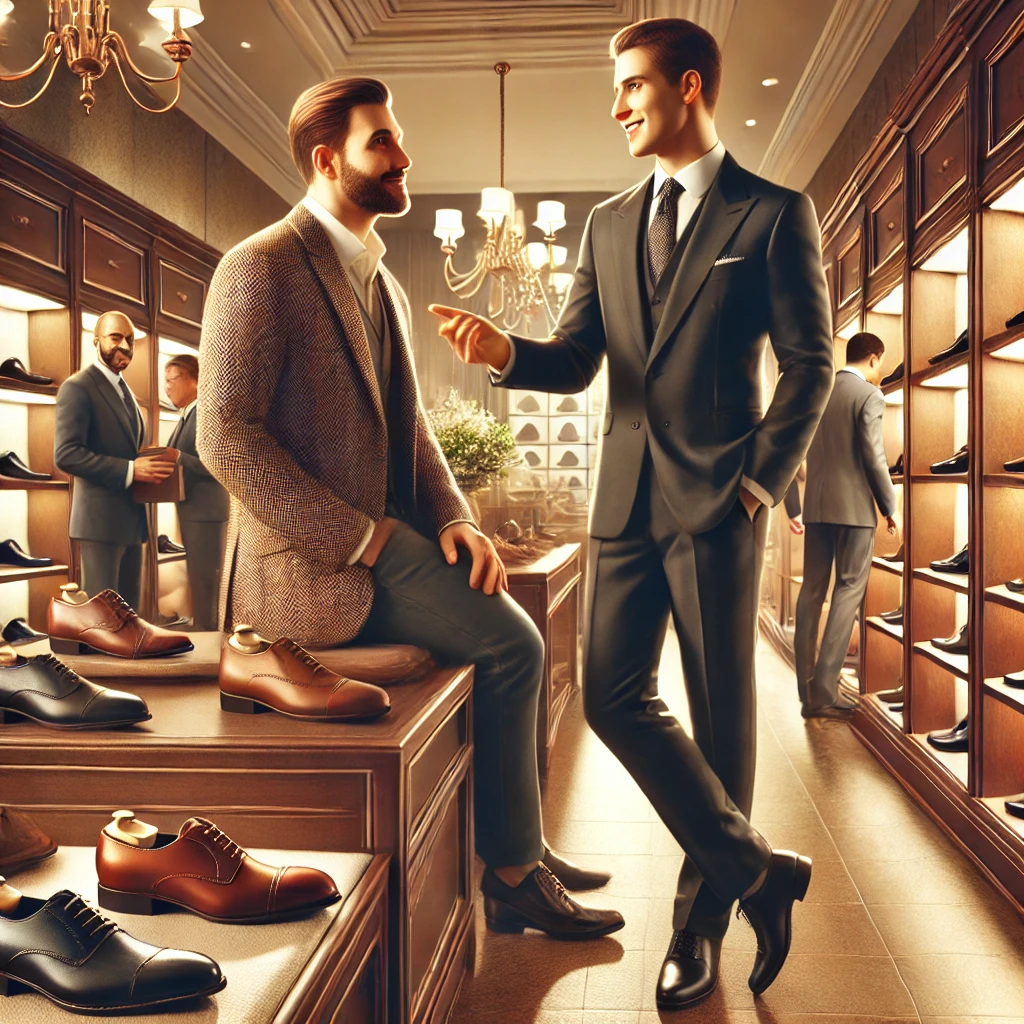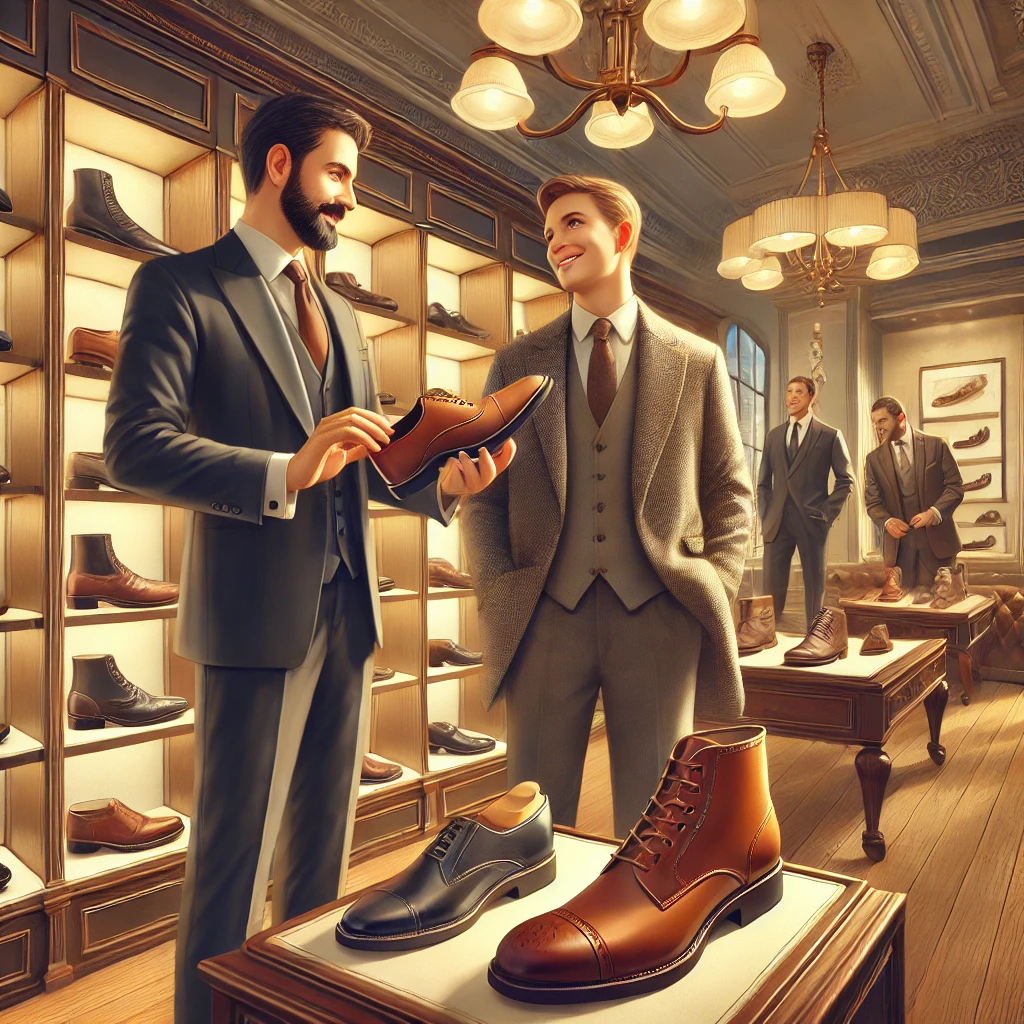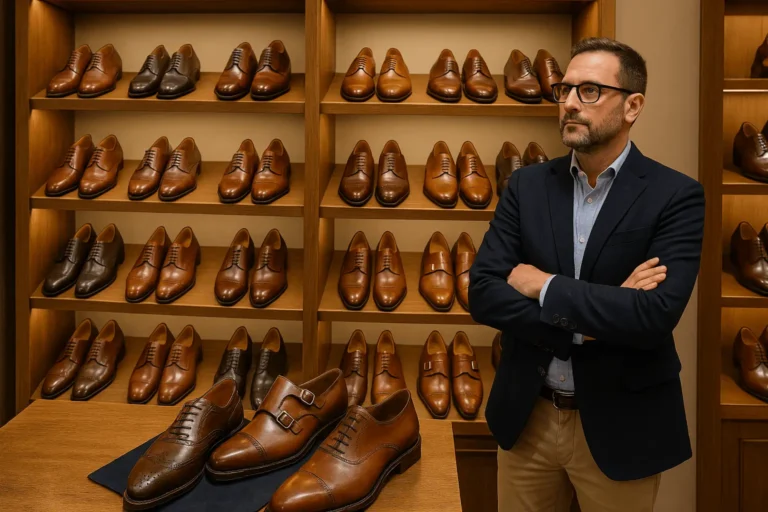Overcoming Price Objections: How to Sell Luxury Shoes in right way
Knowing how to sell luxury shoes is a critical skill and involves a number of challenges, particularly the resistance customers may have toward high prices. Common objections such as “Why should I pay so much for a pair of shoes?” or “I can find something similar for a lower price” are frequently heard and can create obstacles in closing the sale.
However, these objections are not insurmountable. Retailers can adopt strategies that educate customers on the true value of luxury, handcrafted, Made in Italy shoes, turning resistance into an opportunity to showcase quality, exclusivity, and craftsmanship.
Index
1. Value Beyond Price: Educating the Customer
One of the primary issues in selling luxury shoes is price perception. Many consumers simply do not understand the significant differences between handcrafted footwear and mass-produced alternatives. Luxury shoes are not just about aesthetics; they represent an entire process of artisanal craftsmanship that translates into long-term value. Educating the customer about these differences is essential for overcoming price resistance.
Practical Strategies:
- Train Sales Staff: Sales personnel should be well-versed in the nuances of the product, from the materials used to the detailed processes involved in making each pair of shoes. A passionate, informed salesperson can make a huge difference in customer perception. Training should go beyond simple features—staff should be able to convey the craftsmanship and attention to detail in a way that excites the customer.
- Use Persuasive Language: Avoid justifying the price in a defensive manner. Instead, focus on the value proposition. Words like “craftsmanship,” “superior comfort,” “exclusive,” and “long-lasting” should take center stage. By positioning the shoe as an investment, you can help customers understand that the price reflects the quality and longevity of the product.
- Tell the Story: People love stories connected to the product. Share the journey of how the shoes are made—highlighting the artisanal techniques, the skilled labor involved, and the heritage of Italian craftsmanship. When customers understand the amount of time and effort that goes into making each shoe, they’re more likely to appreciate its true worth.
- Emphasize Material Superiority: Demonstrating the difference between materials like genuine leather versus synthetic alternatives can make a compelling case. Genuine leather is not only more durable but also breathes better and ages beautifully. The contrast between mass-produced and handcrafted materials helps to justify the price point.
- Explain Advanced Production Techniques: Techniques like Goodyear welt construction are not just technical jargon—they are a testament to the quality and durability of the shoe. A well-made shoe, with meticulous stitching and attention to detail, will last for years, whereas cheaper alternatives often wear out quickly.

2. The Psychology of Price: Creating Desire and Exclusivity
Luxury items are not sold in the same way as ordinary products. The high price point should not be seen as an obstacle but as an indication of exclusivity. To create desire for the product, you need to make customers feel that purchasing a luxury shoe is not just a transaction but an experience in itself.
Practical Strategies:
- Position the Product Elegantly: Presentation is everything. Display the shoes in an environment that reflects their luxury status—elegantly curated, well-lit spaces with high-end packaging elevate the perceived value of the product. The ambiance should convey a sense of exclusivity that complements the product itself.
- Highlight Long-Term Investment: A luxury shoe is an investment in comfort, durability, and style. Show customers that by purchasing a handcrafted shoe, they are making a wise long-term decision. A lower-cost alternative may be cheaper upfront, but it will need to be replaced in a year or two. By comparing the cost-per-wear, a luxury shoe becomes a much more cost-effective choice in the long run.
- Create Scarcity and Urgency: Limited edition models or small-batch productions elevate the perceived exclusivity of the shoes. When customers know that only a few pieces are available, they may be more inclined to make a purchase. Creating a sense of urgency can trigger the desire to own something rare and unique.
- Leverage Storytelling in Pricing: Explain why the shoes cost more: the time-consuming craftsmanship, the use of top-tier materials, and the involvement of skilled artisans. The more a customer understands the process, the more the high price point will make sense to them.
3. Creating Unique Shopping Experiences
Luxury shopping is about more than just the product—it’s about the experience. By enhancing the shopping journey, retailers can justify the high price of their products and create an environment where customers are eager to make the purchase.
Practical Strategies:
- Personalized Service: Offering personalized fittings, style consultations, and recommendations tailored to the customer’s needs creates a memorable shopping experience. A sense of personal attention makes customers feel special and justified in making a significant purchase.
- Exclusive Events: Host VIP events or private in-store experiences where select customers can preview new collections, interact with designers, or attend private sales. This sense of exclusivity builds emotional attachment to the brand and the products.
- After-Sales Services: Enhance the customer experience with services like free shoe cleaning, maintenance, and repairs. Offering these services gives customers a reason to come back and helps foster loyalty.
- Incorporate Luxury Ambiance: Pay attention to the store’s design—lighting, music, even the scent. All of these elements contribute to a luxurious, immersive shopping experience that makes customers feel like they are treating themselves to something special.
- Digital Presence: In today’s digital world, having an online concierge service for premium clients can further elevate the experience. Allow clients to pre-select their shoes or consult with experts through video calls, ensuring they feel valued even before they enter the store.

4. Addressing Common Customer Objections
Understanding and addressing customer objections is key to overcoming resistance. Here are some common concerns and how to address them:
- “I don’t know if they’re worth it.”
Share testimonials from satisfied customers or show behind-the-scenes videos of the craftsmanship process. A flexible return or exchange policy can also offer reassurance and eliminate any doubts. - “They’re not sure how long they’ll last.”
Highlight the durability of handmade shoes due to superior materials and craftsmanship. Explain that the long-lasting quality of the shoes justifies the initial investment. - “I don’t need such expensive shoes.”
Explain how luxury shoes are a long-term investment due to their superior quality and durability. Buying a pair of handmade shoes reduces the need for frequent purchases, making them a more economical choice in the long run. - “They look uncomfortable.”
Offer personalized fittings to show how the shoe adapts to the foot over time. Highlight the ergonomic design and premium insoles that contribute to superior comfort. - “They feel uncomfortable.”
Explain how high-quality leather adapts to the foot over time. Offer custom solutions to ensure maximum comfort, such as the option to include orthotics or other custom features. - “The shoes aren’t versatile enough.”
Show how luxury shoes can be adapted to different occasions, from formal events to casual looks, thanks to their refined yet practical design. Handmade shoes stand out for their ability to blend with various styles. - “The shoes are too dressy for my style.”
Show that even the most elegant shoes can be dressed up in more casual versions. Quality and timeless design can add a touch of class to even everyday looks. - “The shoes are not breathable enough.”
Highlight the use of high-quality materials that promote breathability, such as calfskin or suede, which keep the foot comfortable and fresh even after long days. - “I’m not sure about the fit.”
Offer personalized consultation to help the customer determine the right size, with the option for custom adjustments to ensure maximum comfort.

5. Relying on quality manufacturers = reduced customer objections
In today’s competitive footwear market, the quality of the products a retailer chooses to sell is crucial to success. Purchasing shoes from reliable, high-quality manufacturers ensures that the final product meets the expectations of the customers and helps reduce objections, complaints, and returns, which can significantly impact a retailer’s reputation.
Fewer Customer Objections: The Advantage of Quality
One of the main benefits of choosing high-quality manufacturers is the reduction in customer objections. When shoes are crafted with the finest materials, such as calfskin, kangaroo leather, or high-quality suede, customers are more likely to appreciate the product and less likely to raise complaints. A satisfied customer is not only more likely to return, but they are also more likely to recommend the retailer to others, helping the business grow organically.
Why do you think customers are more likely to trust a product made with premium materials?
With NGM di Nasini Giorgio, every pair of shoes is carefully crafted to meet the highest standards of luxury and durability. Are your customers looking for footwear that combines comfort and lasting quality?
The Risk of Buying from Unreliable Manufacturers
While it may seem like a good idea to save money by purchasing from manufacturers with questionable quality, this often leads to more problems in the long run. Shoes made from inferior materials and mass-produced with little care for detail tend to wear out faster and cause discomfort. When customers face these issues, they become dissatisfied, which leads to higher rates of returns and complaints.
How do you think inferior quality products might affect your customer base?
A satisfied customer who knows they can rely on your products will become a loyal patron, whereas low-quality shoes can quickly erode trust. Retailers who choose the wrong manufacturers often find themselves managing disgruntled customers and dealing with unwanted returns.
How Quality Reduces Objections
When a retailer chooses high-quality shoes from reliable manufacturers, they are investing in long-term customer satisfaction. High-quality footwear lasts longer, provides better comfort, and retains its aesthetic appeal over time. This, in turn, leads to fewer objections from customers and fewer problems for the retailer. In the long run, this translates to stronger customer loyalty and more repeat business.
How important do you think it is to offer shoes that are both stylish and durable? With NGM di Nasini Giorgio‘s high-quality, handcrafted footwear, your customers can enjoy products that not only meet their expectations but exceed them. By offering products made from premium materials, retailers can build a strong reputation for quality and trust.
The Power of a Satisfied Customer
A satisfied customer is the cornerstone of any successful business. When customers are happy with the products they buy, they are more likely to return for future purchases and share positive feedback. This is particularly true in the luxury footwear market, where buyers expect top-notch craftsmanship, superior materials, and exceptional durability. A high-quality product ensures that customers leave the store confident in their purchase and excited to tell others about their experience.
Conclusion: The Difference is in Your Approach
Overcoming price objections is not about lowering the price but about demonstrating the true value of luxury shoes. By educating customers, leveraging exclusivity, and creating a unique shopping experience, retailers can close more sales and build a loyal, high-end clientele. The key to success lies in how you present your products and the experience you offer your customers. When done right, selling luxury shoes is not just a transaction—it’s the beginning of a long-term relationship with your customers.

